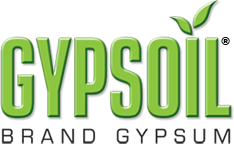Ohio Water Quality Research
New Ohio State-led research shows 55 percent reduction in soluable reactive phosphorus in farm tile water after gypsum applications.
Annual “blooms” of algae in waterways can impact wildlife, water quality and economic livelihood for any region where problems occur. Recent headlines about the disruption of tap water for Toledo residents have turned all eyes on the causes of algal blooms in the Maumee River watershed and also on the practices and technologies that could help prevent water quality problems. Agriculture has been at the center of this discussion.
A study underway in Ohio, supported by the Electric Power Research Institute (EPRI, www.epri.com) and coordinated by Greenleaf Advisors LLC, is yielding promising results from using flue gas desulfurization (FGD) gypsum as a tool to mitigate soluble reactive phosphorus concentrations in tile water draining from farm fields.
 The research is being led by Dr. Warren Dick of the Ohio State University, with the support of agronomists from Nester Ag (www.nesterag.com). They have shown that a single application of gypsum on test sites in the Maumee River watershed reduced concentrations of soluble reactive phosphorus (SRP), the most troublesome form in the area waterways, by a significant amount. The gypsum treated plots showed an average 55% reduction of soluble reactive phosphorus in tile water runoff compared to untreated plots.
The research is being led by Dr. Warren Dick of the Ohio State University, with the support of agronomists from Nester Ag (www.nesterag.com). They have shown that a single application of gypsum on test sites in the Maumee River watershed reduced concentrations of soluble reactive phosphorus (SRP), the most troublesome form in the area waterways, by a significant amount. The gypsum treated plots showed an average 55% reduction of soluble reactive phosphorus in tile water runoff compared to untreated plots.
The researchers contend that FGD gypsum applications, as part of a comprehensive nutrient management strategy, hold significant potential to improve water quality in many areas affected by agriculture, from the Great Lakes to the Gulf of Mexico and beyond. In fact, gypsum is a “win-win” in that farmers are already applying it to improve their soil quality and to improve crop yields, according to the authors of a bulletin about the study. This research documents the environmental benefits of gypsum use to complement the economic ones that are increasinglybeing recognized. Work to find these types of solutions is critical and is supported by many stakeholders; from farmers to regulators to environmental groups.
To learn more about this Ohio water quality research, download the bulletin or visit the Greenleaf Advisors website.

